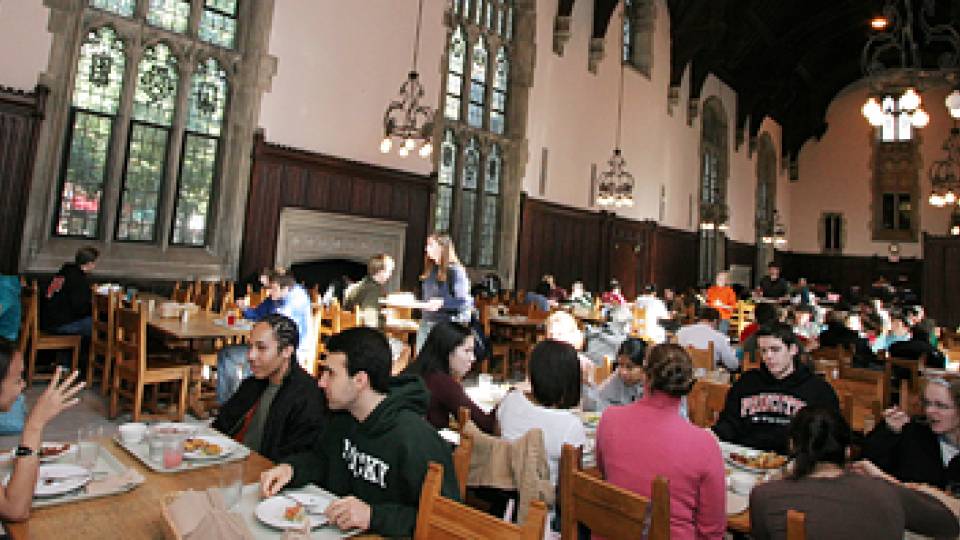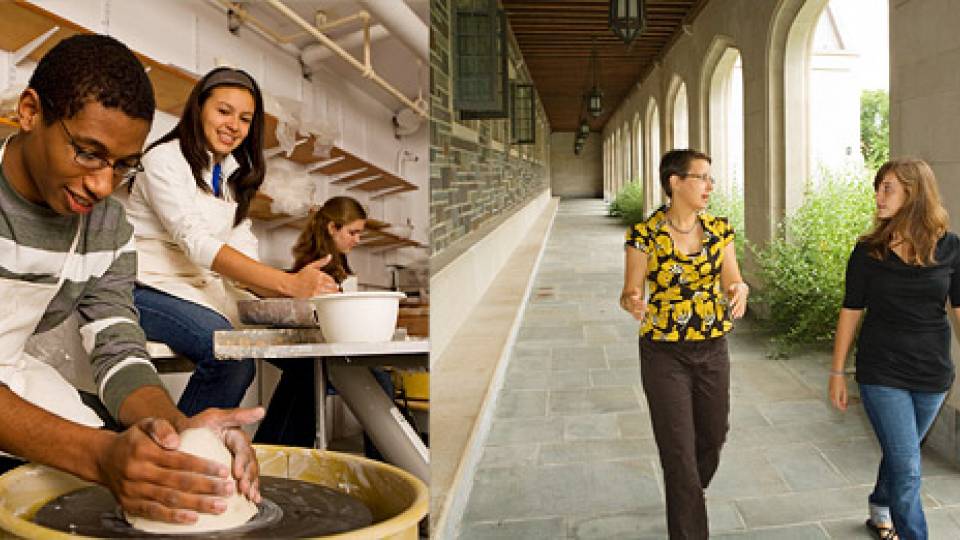Princeton University has a closely knit campus community that offers a wide range of opportunities for life beyond the classroom. Princeton's 10 non-residential eating clubs are a significant part of social life for many undergraduate students. In addition to being friendly places to share meals, the eating clubs that line Prospect Avenue serve as hubs for social activities, academic support, recreational sports and service opportunities. While open for membership to juniors and seniors, they also provide a center of social activity for non-members as well.
About 70 percent of Princeton's junior and senior class members eat their meals in one of the clubs. All of the clubs are coeducational and are operated by student leadership.
"What being a member of a club means most to me is having a family on campus," said Haley Thompson, a member of Cap and Gown Club and the class of 2011. "I study here, I eat here, I do pretty much everything here," she added in a video profile highlighting the many services offered by the eating clubs.
The video addresses one of the goals outlined in the May 3, 2010, report of the University's Task Force on the Relationships between the University and the Eating Clubs, which recommended enhancing communication about the clubs by providing prospective students and others a virtual introduction to the eating clubs and their role at Princeton.
The video also can be viewed on the Undergraduate Admission, InterClub Council/Princeton Prospect Foundation and task force's websites.



